
 |
 |
 |
 |
| Parish Church of St Mary & St Luke, Shareshill incorporating the settlements of Brinsford, Featherstone, Hilton, Laney Green and Little Saredon click here for details of services, events, contacts etc. |
Plan of Shareshill Churchyard For enquiries regarding location of post-1920 graves email the webmaster |
| Links to other parts of the church history page | ||||||
|---|---|---|---|---|---|---|
| church tower | church clock & bells | the Havergals | painted boards | old wall paintings | war memorials | church records |
| There was a church at Shareshill by 1213, believed to be a “Chapel of Ease” to Penkridge. Shareshill acquired parochial status in 1551 when the lay rectors and the Vicar of Penkridge granted it the parochial right of burial. | |
|---|---|
| The tower, the base of which probably dates from the 14th century, is the only medieval feature that remains.
There was a rebuilding around 1562 by Humphrey Swynnerton of Hilton and Swynnerton, who died at Hilton and was buried in the chancel in that year. It was largely rebuilt (again!) around 1742. The south-facing wall is decorated with a partly balustraded parapet contrasting with the plain parapet on the north side. The Church is Grade 2 * Listed on account of the 14th century sandstone tower from a previous church, with a rare, Georgian nave with curved sanctuary built on. In November 2009 an extension was completed on the north side of the church, providing toilets, office, meeting room and internal stair access to the balcony and upper levels of the tower. Getting permission from both the District Council and The Diocesan Advisory Committee was not straight-forward. The final approved design by the talented architect Andrew Capper, cleverly blends Georgian and 21st century styles. | 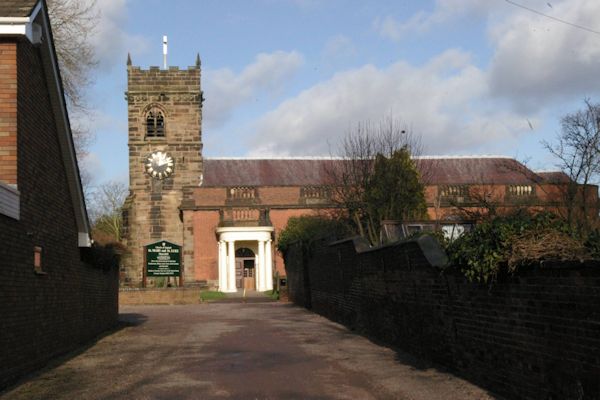 |
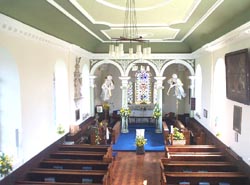 The East end of the nave. This picture shows the giant "angel" paper sculptures that were made for a Flower Festival |
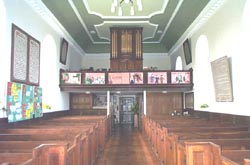 View of the Gallery prior to rebuild and re-siting of the organ | 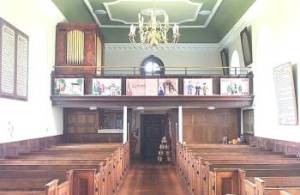 View of the Gallery as it is today. |
. | ||
|---|---|---|
| The Tower The sandstone tower was built in the 13th century. The stone is very soft and has needed a lot of expensive restoration. The outside of the tower bears a number of interesting marks. On the south side (to the left of the church door) there are a number of marks made by musket balls. The webmaster has been informed that this was the result of a civil War skirmish which passed through the village, ending a few miles away at Tong Church. Beneath these, and around the north side of the tower are "sharpening marks"; believed to have been made in medieval times by people sharpening arrow heads, in the days when practising your archery skills was compulsory for men of fighting age. Many years ago someone had the bright idea of putting a window into the vestry at the base of the tower (see photo at the top of this page). This meant having to effectively remove the bottom section of the "spiral" tower stairs and replace them with the external stairs up to the bell ringing chamber. Going up these steps and through the ringing chamber was the only way to get the balcony area until the recent extension was built. This was particularly awkward when the organist had to get past bell ringers to reach the organ; and somewhat dodgy in winter! The stairs inside the tower were designed for 13th century people who were shorter, narrower and had smaller feet!. As you reach the clock chamber you have to duck to avoid banging your head - it may be soft sandstone but it still feels pretty hard! The photograph on the right gives gives little impression of how difficult the stairs are. It was taken with a flash so you cannot appreciate the experience of feeling your way up, torch in hand! | 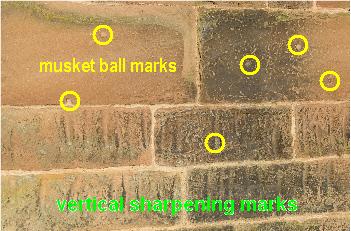  |
 | The peal of six bells was given by Augustus Leveson Vernon, High Sheriff of Staffordshire, in 1899. The bells were last re-cast in 1976 by theJohn Taylor foundry in Loughborough The bells are in regular use and can also be "played" without being swung using a system of ropes and pulley with hammers attached. Being limited to just 6 notes requires some tunes to be creatively re-arranged. The data in black on the right is taken from a chart hanging in the bell ringing chamber. Metric conversions are to the nearest whole unit. |
|
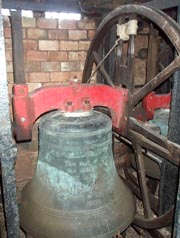 | 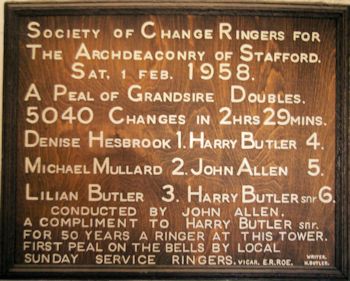 | There have been many loyal and regular ringers over the years. Of particular note are father and son Harry Butler (senior) and Harry Butler (junior); whose dedication is recorded in plaques on the wall of the ringing chamber.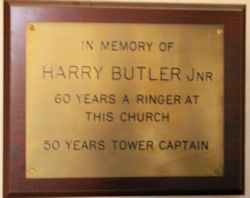 |
The Clock The primative weight-driven clock chimes on the hour. Despite it's crude construction it keeps remarkably good time. The drum on the left of the photograph carries the cable and weight that drives the time mechanism. To the right, with a cable running diagonally downwards, is the drum for the strike mechanism. |  |
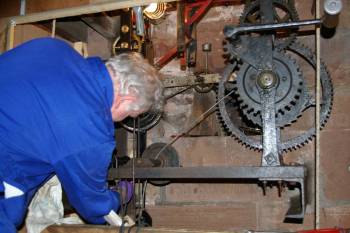 | Early in January 2006 a broken tooth on one of the cog wheels neccessistated removing the mechanism for repairs. To prevent future problems several new gears were made. The picture on the left shows Paul Adams making adjustments following re-installation. Paul was assisted by his late father, George Adams, and by Shareshill webmaster, John Taylor. |
The "Havergals"
Charities board and Terrier
Here are two items in the church dating back to the Havergals' time in Shareshill.
 | On the left is a photograph of the charity board, which is visible in the view of the west end of the nave. It lists old charities that have lapsed, much to the disappointment of W.H. Havergal. |
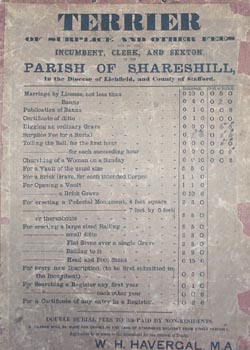 | This document, known as a "Terrier" was found recently. It lists the fees levied by the church for various services such as burials, headstones, the "Churching of a woman on a Sunday" (following childbirth) etc. The charges are of course in Pounds, Shillings and Pence. Fees payable to the minister are in the left of the two columns, the shorter right hand column shows the fees payable to the church warden. It ends with the declaration that burial fees are doubled for non-residents. |
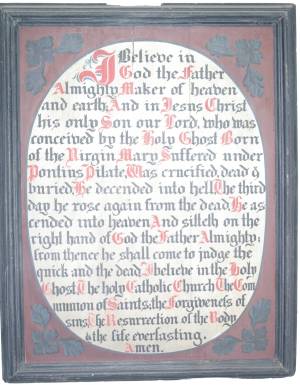 | 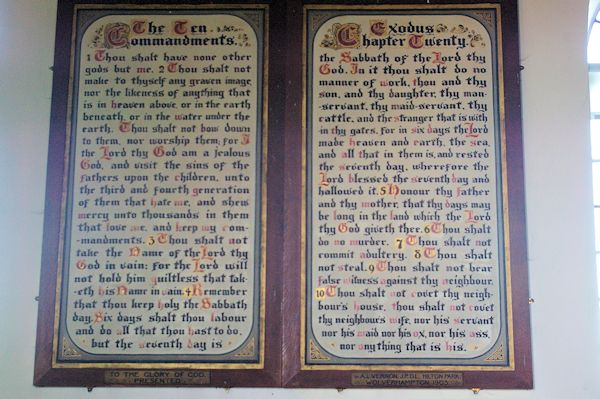 | 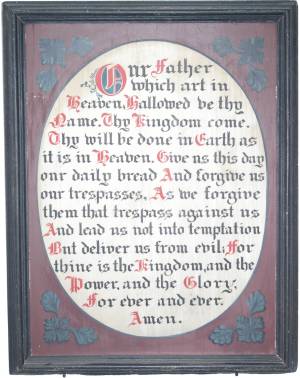 |
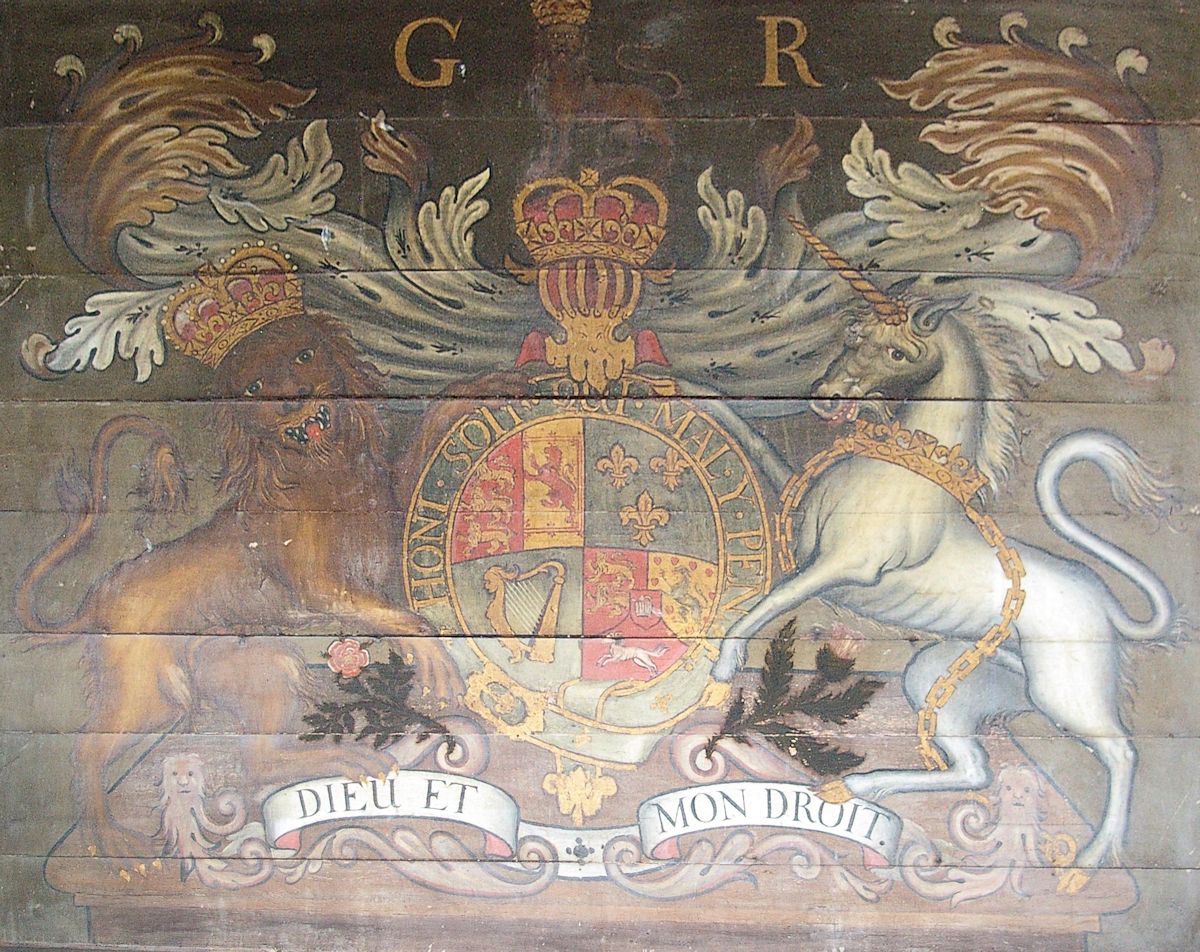
 |  This appears to be a quotation from the Old Testament book of Micah, chapter 6 verse 8 |
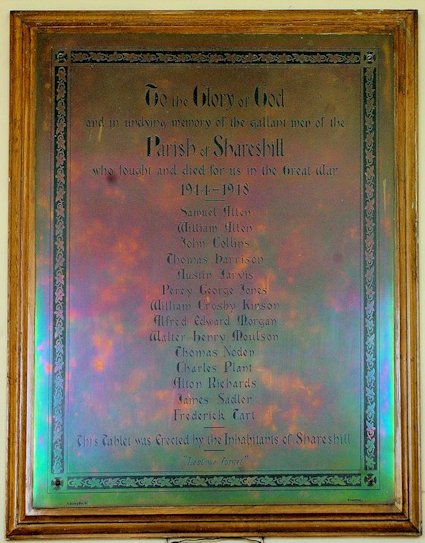 War Memorials online WW 1 | 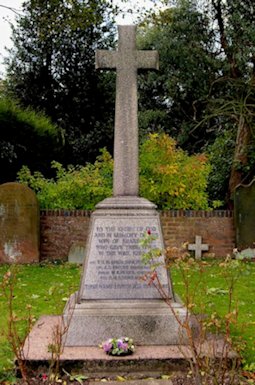 War Memorials onlne WW 2 |